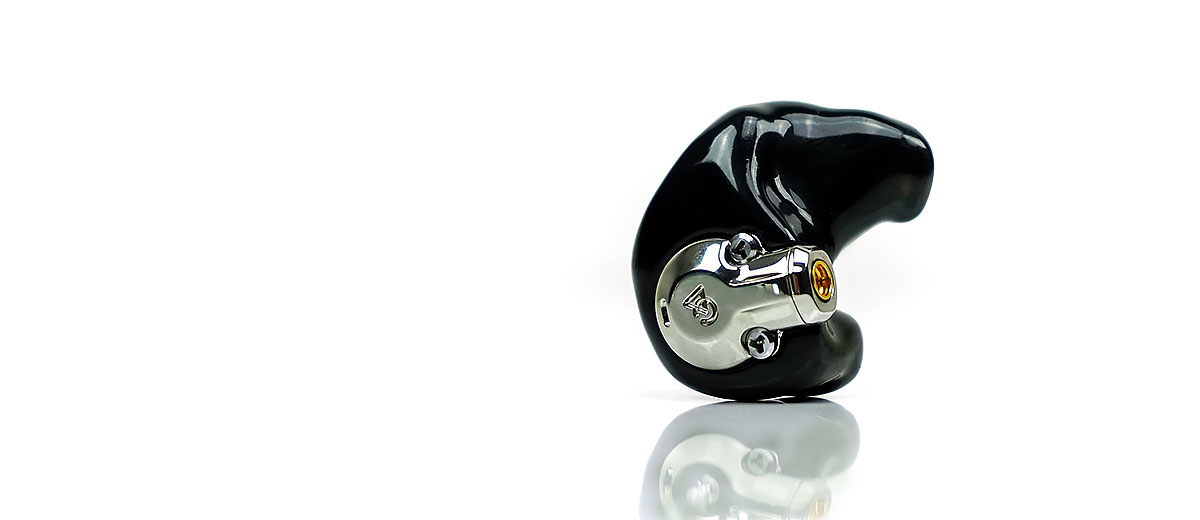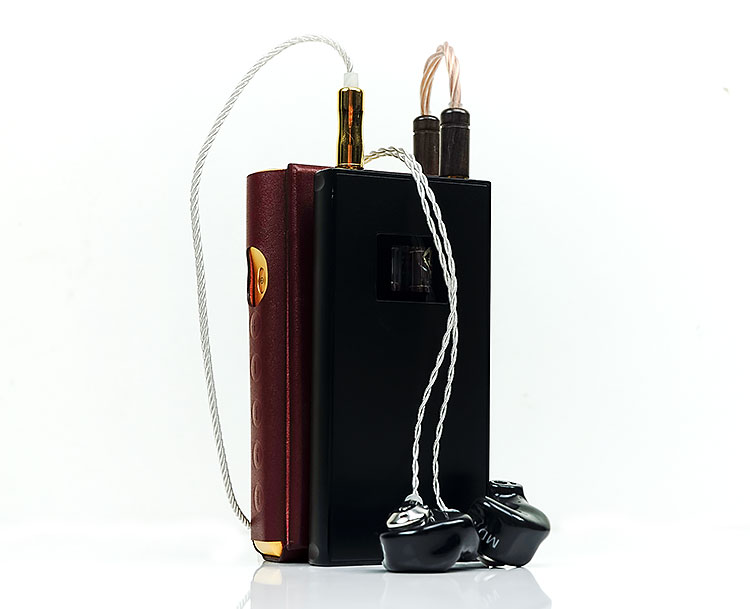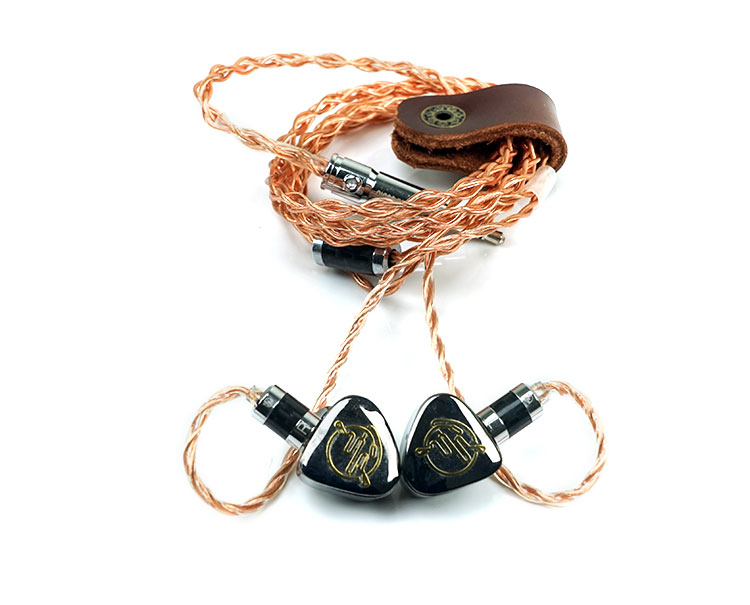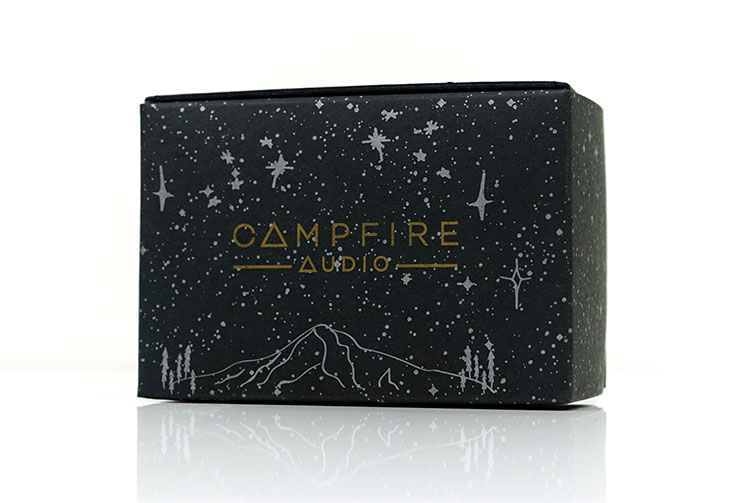Sound Impressions
Summary
For those coming to the Equinox for the first time you are in for a hard-hitting, yet very smooth dynamic driver response and one that I personally have a slight preference for over the Atlas signature.
For Atlas users, the Equinox subtly changes the emphasis from a highly contrasting low-end/treble response and throws a little more presence and body into the mids. Call it a more balanced or “w-shaped” tuning of sorts and not quite as V-shaped as before.
That midrange presence and vocals bump are most welcome as a vocal lover and opens up the Equinox to a slightly wider range of genres compared to the powerhouse Atlas. If you are coming from the Atlas this is where I think you will pick up on the tuning changes the fastest.
The low-end on the Equinox has had a subtle tuning tweak also. It is still immensely powerful but CA have just dipped the sub-bass marginally and let the mid-bass factor come into play a little more with the Equinox.
As a result, it actually sounds punchier, more immediate but throwing out a little more warmth than the Atlas. Combine that with more 1-3k presence and a slightly more relaxed treble tuning and you get a more immediate but slightly more intimate and richer presentation.
Staging
Bucket loads of depth but this time just a slight drop in sub-bass power in favor of slightly more mid-bass punch and warmth. This is not a huge drop so again if coming to the Equinox first time, it is going to trash most multi-BA monitors for low-end reach and power.
Staging on the mids is not as dipped as on the Atlas. Instrumental and vocal presence is more prominent and slightly closer in positioning. Vocals in particular sound “bigger” and more immediate in the Equinox presentation. By comparison, the Atlas is a bit more distant and might offer more perceptible distance but personally, I like the Equinox vocal bias and better balance a bit more.
Staging height is a little different on the Equinox. I would say just a little more relaxed and not quite as airy or as elevated as the Atlas. I do find it more coherent compared to the Vega but not as much headroom as the Andromeda.
Bass
The Equinox has one of the most potent low-end custom monitors outside of the JH Layla for a fraction of the price and a fine example of just how powerful a dynamic driver can be in a custom build. It builds on the legacy of the Vega and Atlas but this time allows for mid-bass presence by just subtly reducing the amplitude of the sub-bass tuning.
I would also contend that Atlas steep 125Hz drop is somewhat more nuanced and slower on the Equinox and responsible for a little more warmth being carried up into the lower-mids. Lower-pitched instrumental timbre, as a result, still sounds powerful but with a lot more body than before.
There seems to be slightly less reliance on sub-bass power or a pure bass fundamental to carry an instrumental note on the Equinox. There is now a bit more ‘deference’ in the low-end tuning to delivering an even-harmonic richness and simply better layering to achieve that fuller sound.
Mids
There is a still a dip coming into the lower-mids to prevent unnecessary bloom and bleed but it does not sound quite as dramatic as the Atlas. Instead, we have a bit more vocal and instrumental presence which makes all the difference. The mids do come across as little more intimate in positioning as a result and not as distant sounding compared to the Vega or Atlas.
However, the Equinox works the space really well and I do actually find the presentation a bit more holographic or 3-dimensional as a result of that positioning tweak.
Instrumental and vocal timbre has a lovely balance on the Equinox. This is a wetter sound than the Atlas or Vega, with more euphonic tone and even-harmonic richness. In short, instruments and vocals sound full and forward with very little sibilant or odd-harmonic sharpness.
There is a little upper mids/lower treble dip on the Equinox, an area that CA raised on the Atlas so percussion does not quite have the same bite or presence. Instead, the Equinox trades that lively energetic signature for a bit more smoothness and body. You might lose a little air and presence but the tuning is much more forgiving for vocals.
Treble
This is the best treble on this driver CA have done to date. It takes the improved coherence of the Atlas treble performance and just brings it down a shade on the lower treble so it sounds a little smoother to my ears. There is less bass/treble contrast with the Equinox treble tuning compared to the Vega or Atlas. Instead, it delivers something a little more forgiving and balanced to my ear.
There is still an 8k elevation on the Equinox so there is no shelving down to achieve the smoother sound but it doesn’t feel overly emphasized. It is not as bright and peppy as the Atlas tuning but it does have more body and a slightly wetter tone.
You are unlikely to find sibilance a factor on the Equinox but as mentioned that lower treble smoothing compared to the Atlas pulls back percussion presence and bite comparatively speaking.
Synergy
Efficiency
The Equinox is rated at 19Ω and 105dB which is the exact same as the Atlas. That should not be surprising given it is the same driver in both monitors. This is also a driver that is more sensitive than the 8.5mm variant inside the older Vega.
The output impedance is also marginally greater than the Vega at 19Ω compared to 17.5Ω but I would discard the perception that the Equinox is harder to drive or scales more than the Vega. It is the complete opposite.
The Equinox is far more at home with most DAPs from the Sony 1Z right down to the HiBy R3 and does not need any external amplification to sound well driven. The Vega always sucked up some serious power to sound awesome.
Noise
There is a little more sensitivity to noise compared to the Vega as was the case with the Atlas. Our old FiiO X5iii did display some hiss, especially in balanced output, but not to a very high level and certainly not as sensitive as the Solaris or Andromeda. Amps such as the tube-powered Oriolus BA300s will also throw in a little hiss to the mix with the Solaris.
On more refined amp stages such as the Lotoo PAW Gold Touch, DX200 with AMP1 MKII, and the Sony 1Z you will get a very satisfying black background and very little in the way of hiss.
Synergy
We went through a number of portable sources in both balanced and unbalanced formats and tended to gravitate to neutral clean signatures when pairing with the Equinox. DAPs such as the Colorfly U8 and the Lotoo PAW Gold Touch, (LPGT), really made the most of the better midrange presence and delivered excellent treble detail.
In particular, the DX220 with AMP1 MK11 and the LPGT sounds the most open with impressive instrumental separation and dynamic range. The pairing with the Sony 1Z in many ways reminded me of the JH Audio Layla low-end scale with excellent power, solid body but just lost out to the more neutral DAPs for treble presence.
For sources with a lot less power such as the HiBy R3, the Equinox performed quite well actually (using balanced) though I did find the low-end to lack a little punch compared to the DX220 and much further behind the 1Z in that regard. Much like the Atlas, hardcore amping for power is not a pressing need with the Equinox.
Select Comparisons
Campfire Audio Atlas
$1299
Technical
It is tempting to say the Atlas is the universal version of the Equinox due to their shared use of CA’s 10mm A.D.L.C. dynamic driver. However, that’s about as far as it goes as they look very different and do have some tuning differences also.
The Atlas’s universal body is wildly different from the more subdued tones of the Equinox. It is a bold, flashy design and much smaller and light than the Equinox. The alloy center is the spiritual link between these two with the branded motif on the top.
The Atlas actually seals better than the Equinox, at least with the Final E tips. The Equinox loses out due to its relaxed fit and large vent port at the top.
However, it is much more secure with its highly accurate fit. Comfort is subjective. Ideally, the Equinox should be more comfortable than the Atlas. However, given the Atlas’s lightweight small form factor and good tips choice, the comfort gap can vary depending on the fit.
Performance
The Atlas is rated at 19Ω and 105dB and a bit more sensitive than its predecessor, the Vega. The Equinox has the exact same ohm and SPL rating.
From my test in both balanced and unbalanced on sources such as the Lotoo PAW Gold Touch and the iBasso DX220, there is virtually no difference in performance between these two, especially for the volume control.
Both the Atlas and the Equinox have some scaling capability. The shared 10mm A.L.D.C. driver performs well with good quality amping with minor sensitivity to higher noise floors. Neither are noise-free on the likes of the FiiO X5iii balanced output but nowhere near as sensitive as the Solaris or Andromeda.
However, neither scale quite like the Vega’s smaller at 8.5mm driver which is often quite happy on medium-powered desktop amps.
Tuning
Since they are based on the same 10mm A.D.L.C. driver the tuning differences are more subtle, but they are there. On the whole, I have a slight preference for the Equinox tuning.
To my ears, CA has just dropped the sub-bass power from the Atlas to the Equinox marginally and allowed for a bit more mid-bass presence. The resulting sound is punchier but also a touch wetter and fuller/warmer in the mids.
Vocals and instrumental timbre do seem a little richer with a better vocal presence which is more to my liking. The Atlas vocals are a little leaner, further back, and not quite as focused by comparison.
Treble is slightly different also. There seems to be slightly less bass/treble contrast from the Atlas and more for body and a smoother tone. Perhaps there is a little lower treble dip or not quite as emphasized upper 8-10k emphasis, but either way, it’s not quite as peppy sounding as the Atlas treble.
Hifiman RE2000 Silver Edition
$1500 (Currently $799)
Technical
The price of the RE2000 is debatable. On the one hand, its SRP is $1500 and should be going toe to toe with the Equinox. On the other hand, about 2 weeks after launch it went to $799 special and stayed there ever since. That’s a good deal actually for a very good performing single dynamic driver universal monitor.
The RE2000 takes a different approach to the Equinox. It is a universal monitor with Hifiman’s topology 9.2mm dynamic driver which uses a form of nanotechnology to help reduce distortion and tweak the sound signature to exactly how Hifiman wants it to sound.
Build wise it is lighter than the Equinox but the shape I always found a little unique on the original RE2000 so it is not as comfy as the Equinox’s custom design. The seal is also not as good as the Equinox with the supplied silicone tips.
There are no foam tips with the RE2000 Silver Edition either but I tried a few anyhow and the seal is still just average for me. This is the benefit of going custom with the Equinox, the superior fit, and seal.
Performance
The RE2000 Silver Edition is rated at 60Ω and 105dB and yes, it is not as sensitive or as easy to drive as the Equinox’s 19Ω and 105dB SPL. Despite both having a similar SPL rating the Equinox will get louder much faster on similar sources.
For example, on the Lotoo PAW Gold Touch, it positioned itself comfortably on low gain unbalanced at 60 steps. With the Equinox, the comfortable volume setting was much lower at 45-50 low-gain unbalanced.
On the flip side, the RE2000 is more resistant to amps with higher noise floors. In our X5iii test, we detected less hiss and noise from the RE2000 compared to the Equinox. Both can also scale but the RE2000 can go just that little bit further into some solid setups like the iBasso DX220 and AMP8 with some excellent dynamic range and very low distortion levels.
The Equinox will sound optimal though on weaker sources which some may interpret as being the more flexible of the two for matchability.
Tuning
A couple of tuning differences here. The Equinox is fuller sounding with less sub-bass roll-off and a generally more aggressive and powerful low-end performance. The RE2000SE has some great bass, with a slow decay also but its sub-bass is a touch more subdued by comparison.
Vocals on the Equinox are a little more elevated and also that bit wetter or richer sounding. The RE2000SE timbre is a little more neutral, cleaner, and with slightly less weight in the vocal performance. I would not call the RE2000SE neutral, not by a long shot. Rather, the Equinox is just the thicker and more intimate sounding of the two.
Instrumental positioning is a little further back on the RE2000SE which seems to have more of a dip around 700-900Hz. The Equinox benefits from that more powerful low-end with a timbre that is richer and warmer but perhaps not showing as much instrumental separation.
The top-end is a tiny bit more relaxed on the Equinox whereas the RE2000SE has a bit more 8-10k sparkle. The percussion timbre is leaner on the RE2000SE but with a nice sweet snap to it and definitely more refined than the Rhapsodio Galaxy V2.
I also find the RE2000SE treble a little smoother than the Atlas and on par with the Equinox’s performance but with a bit more lower treble presence.
Rhapsodio Galaxy V2
$1250
Technical
The Galaxy V2 launched a few years ago and Rhapsodio still offers it at $1250 from their website. We reviewed it in July 2018 and gave it a solid rating though surprised by its distinctly non-typical dynamic driver sound.
The universal Galaxy V2 uses a single dynamic 10.3mm driver with a titanium-coated diaphragm with their UltraMag tech. This is basically a dual magnet build to create a much stronger magnetic field on the driver than a regular dynamic driver design.
The build quality of the Galaxy 2 is very nice indeed. This is a fairly tall 2-piece brass body with a very clean polished finish. It is heavier than the Equinox but a bit smaller also.
The big design issue though is the incredibly short nozzle on the Galaxy V2. You need some big tips to compensate to get the seal and secure fit despite the very nice level of comfort you get from the smooth body.
With standard silicone tips, they have virtually no seal and feel a little loose compared to the much more secure accurate custom fit of the Equinox. You need some fat foams or else the bass will just seep out of the Galaxy V2.
Performance
The Galaxy V2 is rated at 16Ω and 103dB SPL. Testing side by side with the Equinox we found the Galaxy V2 to be marginally less efficient on the SPL side by around 3-5 steps on the Lotoo PAW Gold and similar with the Sony 1Z. Mind you both are relatively easy to drive with most sources so it is going to be more on the synergy side than the power side for both monitors.
The Galaxy V2 is a bit more resistant to source noise floors. With our X5iii test both have nice black backgrounds on the unbalanced output. However, the Equinox showed up the X5iii’s higher noise floor quicker than the Galaxy V2 which stayed quiet.
Tuning
Both of these dynamic driver IEM’s extend very well indeed right down to 20Hz. However, the Equinox amplitude or elevation is much higher and extends further into the mid-bass response. As such it sounds more forward, fuller-bodied and a touch warmer than the Galaxy V2. The Galaxy sub-bass response is a little lighter and has a slightly faster rate of decay.
The lack of warmth is a theme in the Galaxy V2 timbre and never more so in the lower-mids which dip a bit more than the warmer drop of the Equinox.
You will hear a leaner timbre on the Galaxy v2 with instrumental positioning a little further back but with good separation. Some might prefer that lack of dominating low-end and combined with a set of foam tips and a nice thick-sounding copper cable it responds well without overpowering the mids.
The Galaxy V2 lean timbre extends into the vocals and percussion presence. They are positioned similarly to the Equinox, if not a touch further forward but lack the richness of the Equinox. I find the Equinox vocal presence to have more warmth also and be a little smoother.
The treble body is also a little bit better on the Equinox. The Galaxy V2 seems more elevated around 5k with more percussion presence. That presence is lean though and can create a slightly harder harmonic on percussion notes but not something I would call overly hot.
By contrast, the Equinox is a bit more relaxed in its top-end. There is not as much lower treble boosting so it’s smoother than the Galaxy V2, with a fuller body and slightly less bite. A more natural tone you could say.
Our Verdict
The Equinox is like the richer ‘juicier’ cousin of the Atlas. Going from a ‘V’ to a ‘W’, the Equinox trades in a lot of that “contrast excitement’ of the universal monitor for something a little more balanced with much more midrange and vocal presence.
It still has bags of power but this time it injects a bit more warmth as well as the most mature treble tuning to date on this 10mm A.D.L.C 10mm driver. I have to say I have a preference for how the Equinox is tuned. I do enjoy a solid vocal delivery and the Equinox will give you that.
As a custom monitor, it is the type of design that will really suit those who value supreme comfort and don’t mind a little give on the seal to get it. Dynamic driver port venting will never give you as much of a seal as unvented BA builds so it is a sensible move to focus on the comfort levels.
For a freshman debut, the Equinox is an excellent custom monitor. Mine was from the beta program stage so I am pretty sure we will see a lot more in terms of a refined build process and possibly driver variations in the future from Campfire Audio.
Campfire Audio Equinox Specifications
- 5Hz–20 kHz Frequency Response
- 105 dB SPL/mW Sensitivity
- 19 Ohms @ 1kHz Impedance
- Less than 1% Total Harmonic Distortion







